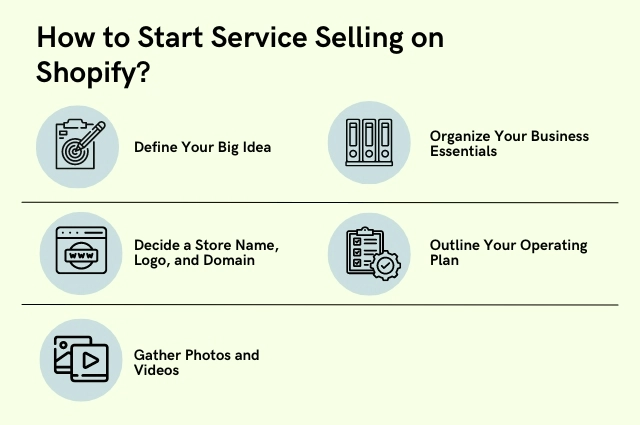
How to Sell Services on Shopify
Are you eager to unlock the potential of online commerce and showcase your services to a global audience? With Shopify, the process of setting up your own digital storefront has never been easier.
Although it is most commonly connected with the setup store to sell products, Shopify also allows selling services. The tools and resources provided by Shopify can facilitate the sale of, services, just as they do for physical goods.
In this blog, we will discuss how to effectively help in selling your services and attract more customers.
What is Shopify?
Shopify is a complete commerce platform that enables anybody to create, manage, and grow a business. You may use Shopify to create an online store, manage sales, market to customers, and collect payments both digitally and physically.
Shopify’s reputation as a commerce leader stems from the feedback of millions of business owners. Shopify has created features and solutions that fuel today’s businesses and will define the future of commerce by empowering solopreneurs and enterprise brands.
How Does It All Work?
Shopify consolidates commerce activities into a single platform, allowing one administrator to oversee the full sales process, from order receipt to post-sale analytics.
Shopify allows business owners to sell in a variety of venues, including their website, marketplaces, and social media, as well as in person in brick-and-mortar stores. Inventory and customer data can be synchronized across channels for easier administration.
Shopify is a secure, cloud-based, and hosted platform, that allows you to access your data from any suitable device with an internet connection. This provides you the freedom to operate your business from anywhere.
Also Read: Shopify vs Magento
How to Start Service Selling on Shopify?

Step 1: Define Your Big Idea
Before diving into the world of e-commerce, take some time to define your unique value proposition and identify the services you’ll be offering through your Shopify store. Whether you’re a consultant, a coach, a designer, or an educator, clarity on your offerings is essential.
Consider your expertise, passions, and target audience as you brainstorm ideas for your online store. Is it your passion to help others achieve their goals? Do you have specialized knowledge or skills that you can share with the world? By aligning your services with your strengths and interests, you’ll not only attract customers but also derive greater satisfaction from your work.
Keep in mind that Shopify offers unparalleled flexibility, allowing you to sell a wide range of services, from consulting sessions and online courses to digital downloads and virtual events. Don’t be afraid to think outside the box and explore innovative ways to monetize your skills and knowledge.
Step 2: Decide a Store Name, Logo, and Domain
It’s time to give your Shopify store a distinct identity that reflects your brand and resonates with your target audience. Start by choosing a memorable store name that goes with the essence of your business and sets you apart from the competition.
Next, design a captivating logo that captures the essence of your brand and leaves a lasting impression on your customers. Shopify offers a wide range of customizable themes and fonts to help you create a professional-looking logo that aligns with your brand aesthetic.
Once you have your store name and logo sorted, it’s time to register a domain name that reflects your brand identity. Reach out to Shopify Developers to make this process easy and effective for you.
Step 3: Gather Photos and Videos
Visual content plays a crucial role in capturing the attention of potential customers and showcasing the value of your services. Take high-quality photos and videos that highlight the benefits and features of your offerings, whether it’s consulting sessions, online courses, or virtual events.
Shopify’s customizable themes allow you to create visually stunning product pages and blog posts that engage your audience and drive conversions.
Step 4: Organize Your Business Essentials
Before launching your Shopify store, it’s essential to take care of some logistical details to ensure smooth operations. Depending on your location and business structure, you may need to register your business, obtain a sales tax permit, and set up a separate business bank account.
Step 5: Outline Your Operating Plan
With the logistical details sorted, it’s time to develop a plan for how you’ll run your Shopify store on a day-to-day basis. Consider factors like order fulfillment, customer support, marketing strategies, and scalability as you outline your operating plan.
Also Read: 7 Best Payment Methods for Shopify Store
Ready to Sell Services on Shopify?
Selling services on Shopify offers endless opportunities for entrepreneurs to showcase their expertise, monetize their skills, and reach a global audience.
Contact CRM Masters Infotech, our team of certified Shopify experts will help you leverage the power of Shopify’s platform, so you can build a thriving online business that generates sustainable income and fulfills your entrepreneurial aspirations.
So what are you waiting for? Get in touch with us now!












